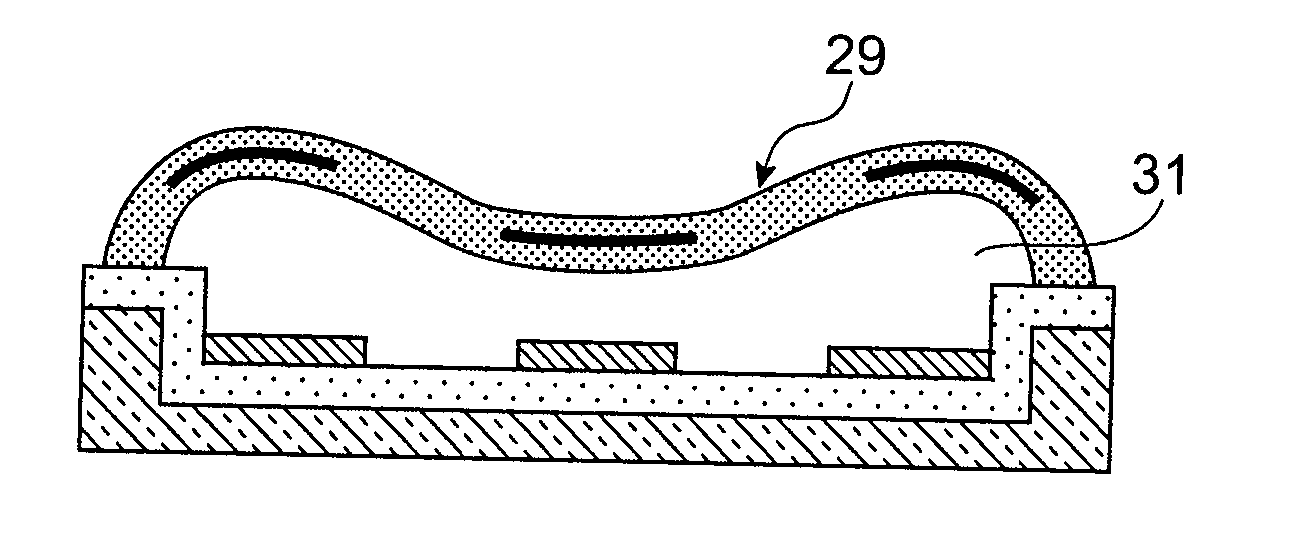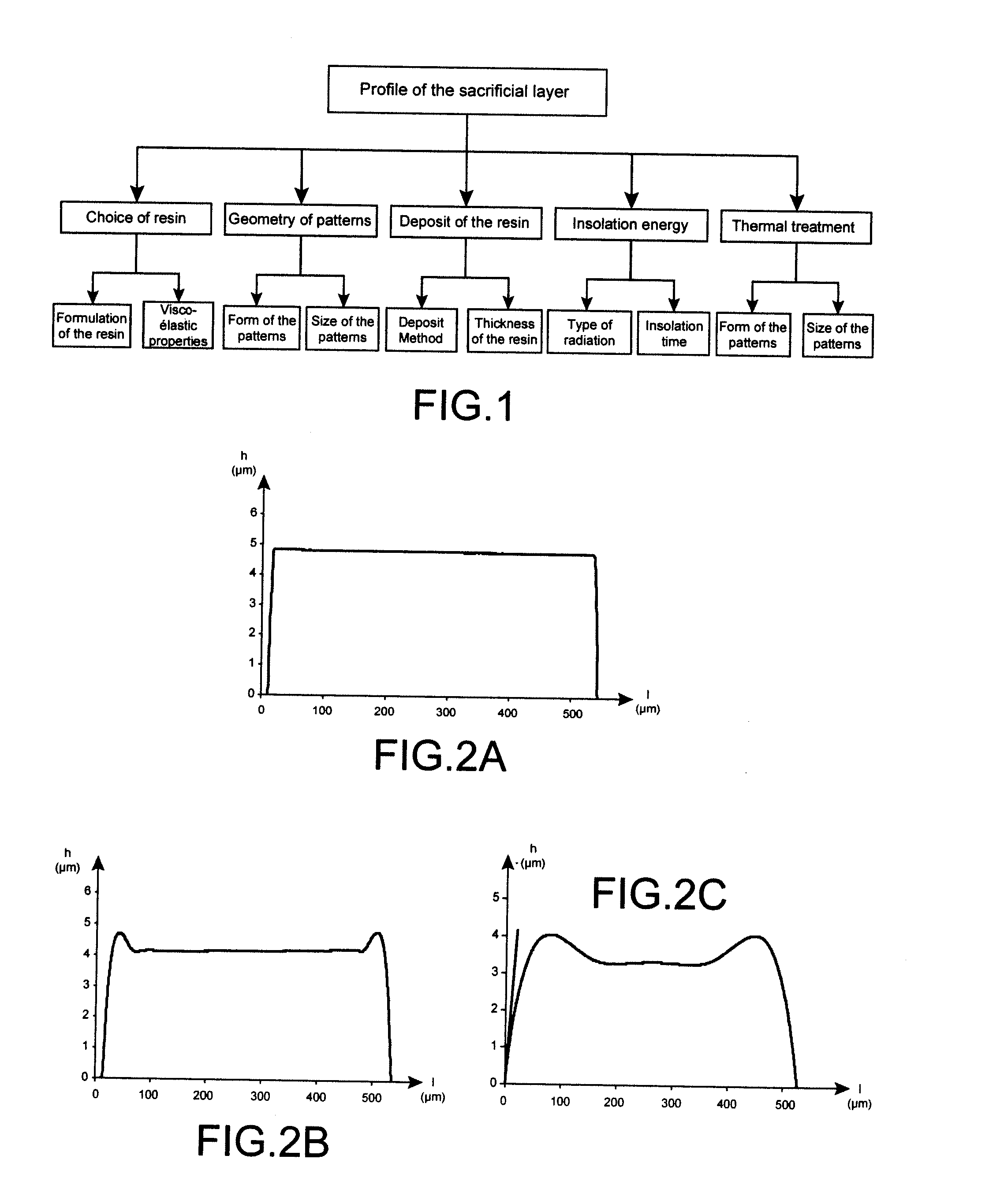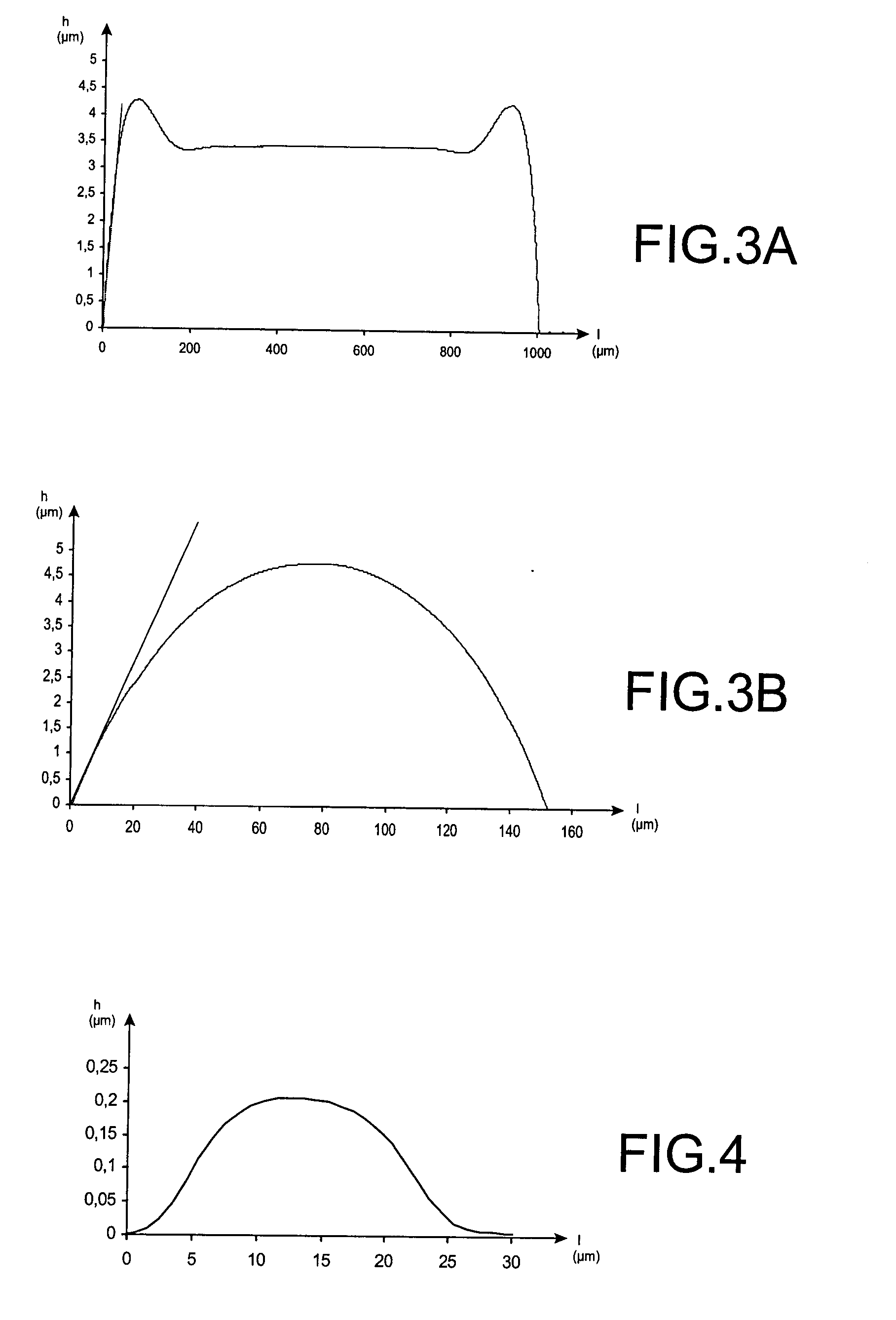Forming a sacrificial layer in order to realise a suspended element
a technology of sacrificial layer and element, which is applied in the direction of variable capacitor, capacitor with electrode distance variation, electrical apparatus, etc., can solve the problems of non-photosensitive polymers that are difficult to implement, non-photosensitive polymers and non-organic materials that require suitable etching techniques, and expensive polishing steps (cmp). to achieve the effect of simplifying the method of realisation
- Summary
- Abstract
- Description
- Claims
- Application Information
AI Technical Summary
Benefits of technology
Problems solved by technology
Method used
Image
Examples
Embodiment Construction
[0053] Several parameters can influence the final aspect of the sacrificial layer, in particular the manner of depositing the photosensitive polymer resin, the type of polymer, its viscosity, its adhesion capacity, the thermal treatment subsequent to the deposition, solvents used during dilution, the atmospheric conditions (temperature and humidity) and storage conditions.
[0054] In order to understand how these parameters change, the sequences of implementing this sacrificial layer must be known. The method of realisation of a suspended element includes the steps of depositing the resin, and of annealing (for example towards 90° C.) in order to give strength to the resin, insolation of the resin, revelation or development of the resin, of the thermal cycle which continues via the deposition of the suspended element and the etching of openings in order to obtain access to the sacrificial layer and its removal.
[0055] Optimising the profile of the sacrificial layer corresponds to opt...
PUM
 Login to View More
Login to View More Abstract
Description
Claims
Application Information
 Login to View More
Login to View More - R&D
- Intellectual Property
- Life Sciences
- Materials
- Tech Scout
- Unparalleled Data Quality
- Higher Quality Content
- 60% Fewer Hallucinations
Browse by: Latest US Patents, China's latest patents, Technical Efficacy Thesaurus, Application Domain, Technology Topic, Popular Technical Reports.
© 2025 PatSnap. All rights reserved.Legal|Privacy policy|Modern Slavery Act Transparency Statement|Sitemap|About US| Contact US: help@patsnap.com



